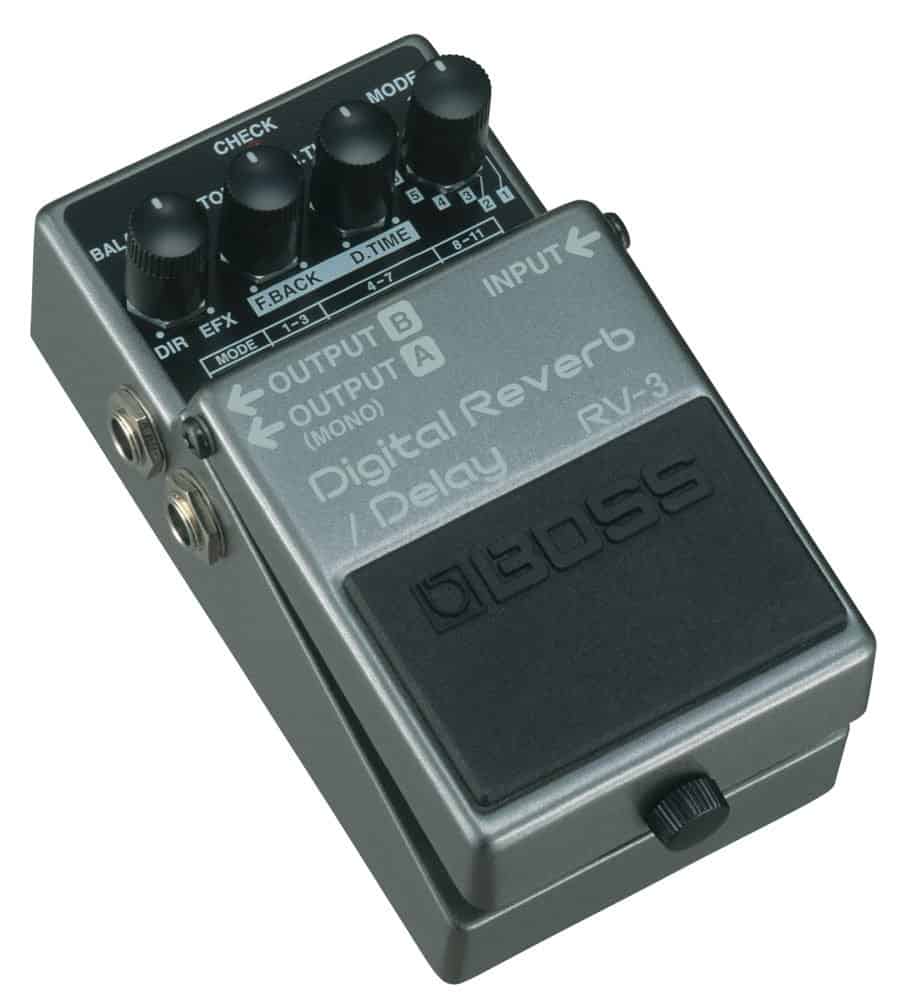
Earlier this year, I sold my trusty, versatile MXR Reverb. In its place I bought a Boss RV-3 Digital Reverb / Delay, a pedal that’s been out of production for nearly two decades, with a mere four reverb modes and a chunk missing out of the footswitch. It’s not unreasonable to ask… why? Surely, in the world of digital guitar pedals, newer is better. Right?
As much as I appreciated the quality of MXR Reverb and how well-executed its algorithms are, I found myself kind of uninspired by it. Its sound is so pristine and, with the exception of the Mod / Epic modes, the sounds are pretty generic. For a lot of people, that’s ideal, but it wasn’t inspiring me to play.
History
I’ve long admired the band Explosions in the Sky. None of their songs have lyrics but, thanks to their musicianship and epic sound, their music is extremely dramatic and exciting. Reading about their loyalty to the Boss RV-3 despite its long obsolescence sparked my curiosity, so I went on reverb.com to sell the MXR and buy a well-used RV-3.
A little context on the Boss RV-3. It was sold from March 1994 until August 2002, and was the followup to the Boss RV-2, the world’s first ever digital reverb pedal. it’s been used by Radiohead, The XX, and Korn, to mention a fraction. It was followed by the RV-5 in 2002, which was itself superseded in 2015 by the RV-6.
Specifications
It has three digital delay modes (from 32ms up to 2000ms), four reverb modes (Hall 1, Hall 2, Room and Plate), and four delay+reverb modes.
There are four knobs: “Balance”, which adjusts the wet/dry signal mix; “F.back/Tone” (adjusts delay feedback in delay/delay+reverb, timbre when reverb only); “D.time/R.time” (adjusts delay time in delay/delay+reverb, reverb time when reverb only); and Mode. It has a single input and mono/stereo output, and takes a 9V battery or external power.
If you don’t own a standalone delay pedal, it’s convenient to have delay and reverb in a single unit, which is rare lately (the Earthquaker Dispatch Master a notable exception). Convenience aside, I usually don’t use the delay/reverb combination, because when it’s active, the reverb time is fixed, and it’s not as long as I’d like. I usually use a dedicated delay (like the Electro-Harmonix Canyon or Behringer VD-400 Vintage Delay) and leave the RV-3 as a reverb.
Pros
The digital delay is pretty generic, but the reverb is very special. Thanks in part to the technical limitations of the old hardware, there is a gorgeous cold, digital cloudiness to the sound. My favorite setting is 11, the Plate algorithm. It’s gritty and vast, an ideal counterpart to the natural brightness of single coil pickups.
Cons
It’s not suitable for everybody. The murky metallic sound is a turnoff for many players. It doesn’t have as many parameters as more modern reverbs, and in a world where the Boss RV-6 has eight modes and the EHX Oceans 11 has 11 modes, a stompbox with only four reverb modes can feel pretty restrictive. If you want a spring or shimmer mode, this is the wrong pedal for you. Furthermore, it doesn’t have stereo inputs.
Conclusion
The Boss RV-3 was one of very few digital reverbs available in the 90s, and is showing its age. but that’s part of its charm. If you’re willing to work with its limitations, it’s a great option for a classic reverb sound. In the USA you can usually find them on Reverb.com for under $100.
